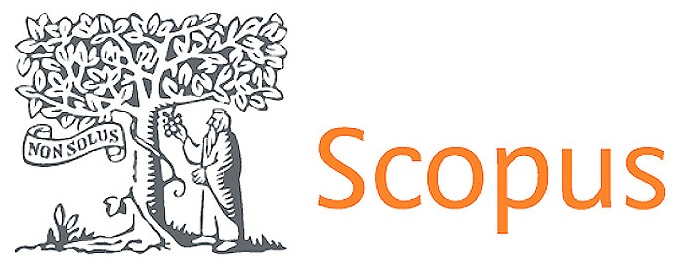The Application and challenges of virtual reality technology on modern visual communication design
DOI:
https://doi.org/10.56294/sctconf20251477Keywords:
Virtual Reality (VR), Visual Communication Design, Golden Eagle Optimized Flexible Bayesian Neural Network (GEO-FBNN), Graphic Design, Visual FramesAbstract
Introduction: Virtual reality (VR) technology is transforming visual communication design by providing immersive experiences that enhance the production and presentation of visual content. This study explores the application of VR in this field, emphasizing its transformative potential while addressing associated challenges.
Methods: We utilized the Golden Eagle Optimized Flexible Bayesian Neural Network (GEO-FBNN) to predict feature distributions, such as element position and color, under specific VR conditions. A dataset comprising high-quality design elements, real-time user interaction patterns, and VR system data was pre-processed for consistency, through min-max normalization and data cleaning. Experiments were conducted using Python 3.8 on Windows 10, ensuring compatibility with VR hardware.
Results: The implementation of a deep learning approach significantly improved the real-time processing capabilities of VR systems. It established connections between visual frames, revealing insights that enhance design accuracy and responsiveness. The findings suggest that deep learning effectively mitigates challenges in VR integration, including motion sickness and navigation ease.
Conclusions: This research provides a comprehensive overview of how deep learning can address the obstacles to incorporating VR in visual communication design. The results indicate not only a reduction in technical challenges but also an increase in creative opportunities, paving the way for a more integrated future of design in virtual environments.
References
[1] Durojaye A, Kolahdooz A, Nawaz A, Moshayedi AJ. Immersive horizons: exploring the transformative power of virtual reality across economic sectors. EAI Endorsed Transactions on AI and Robotics. 2023 Jun 9;2.https://doi.org/10.4108/airo.v2i1.3392 DOI: https://doi.org/10.4108/airo.v2i1.3392
[2] Li W, Zhu J, Dang P, Wu J, Zhang J, Fu L, Zhu Q. Immersive virtual reality as a tool to improve bridge teaching communication. Expert Systems with Applications. 2023 May 1; 217:119502. https://doi.org/10.1016/j.eswa.2023.119502 DOI: https://doi.org/10.1016/j.eswa.2023.119502
[3] Hamad A, Jia B. How virtual reality technology has changed our lives: an overview of the current and potential applications and limitations. International journal of environmental research and public health. 2022 Sep 8;19(18):11278. https://doi.org/10.3390/ijerph191811278 DOI: https://doi.org/10.3390/ijerph191811278
[4] Conner NO, Freeman HR, Jones JA, Luczak T, Carruth D, Knight AC, Chander H. Virtual reality induced symptoms and effects: concerns, causes, assessment & mitigation. InVirtual Worlds 2022 Nov 1 (Vol. 1, No. 2, pp. 130-146). MDPI. https://doi.org/10.3390/virtualworlds1020008 DOI: https://doi.org/10.3390/virtualworlds1020008
[5] Fitrianto I, Saif A. The role of virtual reality in enhancing Experiential Learning: a comparative study of traditional and immersive learning environments. International Journal of Post Axial: Futuristic Teaching and Learning. 2024 Jun 27:97-110. https://doi.org/10.59944/postaxial.v2i2.300
[6] Yin R, Wang D, Zhao S, Lou Z, Shen G. Wearable sensors‐enabled human–machine interaction systems: from design to application. Advanced Functional Materials. 2021 Mar;31(11):2008936. https://doi.org/10.1002/adfm.202008936 DOI: https://doi.org/10.1002/adfm.202008936
[7] Chang YS, Chou CH, Chuang MJ, Li WH, Tsai IF. Effects of virtual reality on creative design performance and creative experiential learning. Interactive Learning Environments. 2023 Feb 17; 31(2):1142-57. https://doi.org/10.1080/10494820.2020.1821717 DOI: https://doi.org/10.1080/10494820.2020.1821717
[8] Li X, Zheng H, Chen J, Zong Y, Yu L. User Interaction Interface Design and Innovation Based on Artificial Intelligence Technology. Journal of Theory and Practice of Engineering Science. 2024 Mar 19;4(03):1-8. https://doi.org/10.53469/jtpes.2024.04(03).01 DOI: https://doi.org/10.53469/jtpes.2024.04(03).01
[9] Yu G, Akhter S, Kumar T, Ortiz GG, Saddhono K. Innovative application of new media in visual communication design and resistance to innovation. Frontiers in Psychology. 2022 Aug 3; 13:940899. https://doi.org/10.3389/fpsyg.2022.940899 DOI: https://doi.org/10.3389/fpsyg.2022.940899
[10] Liu GC, Ko CH. Exploring multiple application scenarios of visual communication course using deep learning under the digital twins. Computational Intelligence and Neuroscience. 2022; 2022(1):5844290. https://doi.org/10.1155/2022/5844290 DOI: https://doi.org/10.1155/2022/5844290
[11] Gu Y, Wang Q, Gu W. The innovative application of visual communication design in modern art design. Electronics. 2023 Feb 27; 12(5):1150. https://doi.org/10.3390/electronics12051150 DOI: https://doi.org/10.3390/electronics12051150
[12] Zhang Q, Guo X, Sun M, Samuel RD, Kumar PM. Visually improved digital media communication using virtual reality technology and digital twin. Journal of Interconnection Networks. 2022 Jun; 22(Supp04):2146005. https://doi.org/10.1142/S0219265921460051 DOI: https://doi.org/10.1142/S0219265921460051
[13] Guan X, Wang K. Visual communication design using machine vision and digital media communication technology. Wireless Communications and Mobile Computing. 2022; 2022(1):6235913. https://doi.org/10.1155/2022/6235913 DOI: https://doi.org/10.1155/2022/6235913
[14] Regal G, Pretolesi D, Schrom-Feiertag H, Puthenkalam J, Migliorini M, De Maio E, Scarrone F, Nadalin M, Guarneri M, Xerri GP, Di Giovanni D. Challenges in virtual reality training for CBRN events. Multimodal Technologies and Interaction. 2023 Sep 11; 7(9):88. https://doi.org/10.3390/mti7090088 DOI: https://doi.org/10.3390/mti7090088
[15] Nilsson T, Rometsch F, Becker L, Dufresne F, Demedeiros P, Guerra E, Casini AE, Vock A, Gaeremynck F, Cowley A. Using Virtual Reality to Shape Humanity’s Return to the Moon: Key Takeaways from a Design Study. InProceedings of the 2023 CHI Conference on Human Factors in Computing Systems 2023 Apr 19 (pp. 1-16). https://doi.org/10.1145/3544548.3580718. DOI: https://doi.org/10.1145/3544548.3580718
Downloads
Published
Issue
Section
License
Copyright (c) 2025 Jun Mao (Author)

This work is licensed under a Creative Commons Attribution 4.0 International License.
The article is distributed under the Creative Commons Attribution 4.0 License. Unless otherwise stated, associated published material is distributed under the same licence.



